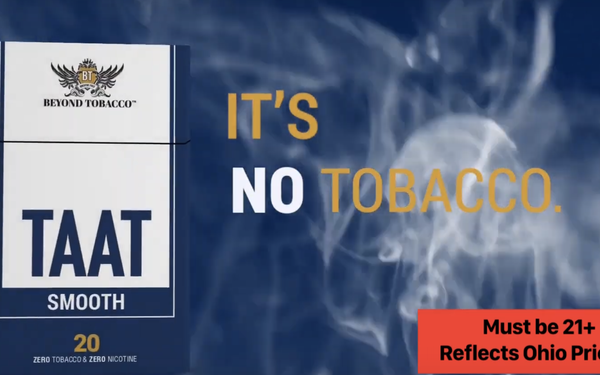
Taat hemp cigarettes are positioned to
help people kick nicotine altogether.
A shift back to cigarettes during the pandemic has paused a long sales decline, while posing more headwinds for
the already challenged e-cigarette category.
How long the bottoming of cigarette sales will continue is anyone’s guess, because it’s dependent on many variables—a condition
with which all CPG brands can identify.
The list of variables includes “smokers’ stay at home practices, unemployment rates, fiscal stimulus, cross category movement, the timing
and breadth of COVID-19 vaccine deployment and consumer purchasing behavior following the vaccine,” Altria Group CFO and EVP Sal Mancuso said on Jan. 28.
Given user demographics,
economics—including a contemplated rise in the minimum wage to $15 over the next several years—will play a role in whether cigarettes return to what had been a decades-long decline.
advertisement
advertisement
“In tobacco, we know that usage skews significantly to lower-income consumers,” Cowen Research analyst Vivien Azer wrote this week.
She cited government survey data indicating
that incidence of cigarette use is 21.4% for people with household incomes below $35,000, compared to 7.1% for those making $100k or more.
Meanwhile, Altria estimates that sales volume of what
it terms “e-vapor” products declined by 10% during its recently ended fiscal year.
In addition to lingering questions about the lung ailments tied to vaping that swept the country
in 2019, government strictures continue to muddy the marketplace.
A year ago this month, the U.S. Food and Drug Administration restricted the use of flavors in cartridge-based e-cigarettes out
of concern for their appeal to youths. Vape distribution will be further hampered by the the recent federal stimulus package banning the United States Postal Service from delivering vape products.
Two years ago, Altria partnered with Helix Innovations to sell the on! brand of nicotine pouches. Distribution of on! increased by nearly 40% during the fourth quarter—to some 78,000 stores,
according to the company.
Altria’s main focus continues to be the non-combustible delivery of nicotine via devices like the IQOS tobacco-heating system and Marlboro HeatSticks. Early
marketing involves educating the public about these devices’ FDA classification as Modified Risk Tobacco Products amid skepticism in some quarters about their overall health value.
In
this video, a Philip Morris International executive says that while the company has stuck to “facts and data” it is “often
faced with well-funded but ill-founded organizations who allow disinformation to appear as legitimate science.”
He does not cite a specific organization.
Makers of the Taat brand
of hemp cigarettes—which recently launched in Ohio—are dealing with education of a different sort, given the product’s positioning as helping people kick nicotine altogether as
opposed to ingesting it in different ways.
To introduce the brand, last month Taat launched a 60-day, digital OOH campaign on 10,442 gas pump screens at 1,087 gas stations across Ohio.
Targeted at current smokers ages 21+, a video directs viewers to a landing page to request a free sample.
“Based on traffic to the TryTaat website and continued reports of in-store requests for Taat, we consider this campaign to be a success so far as part of our launch in Ohio,” Taat
Lifestyle and Wellness LLC CEO Setti Coscarella tells Marketing Daily.